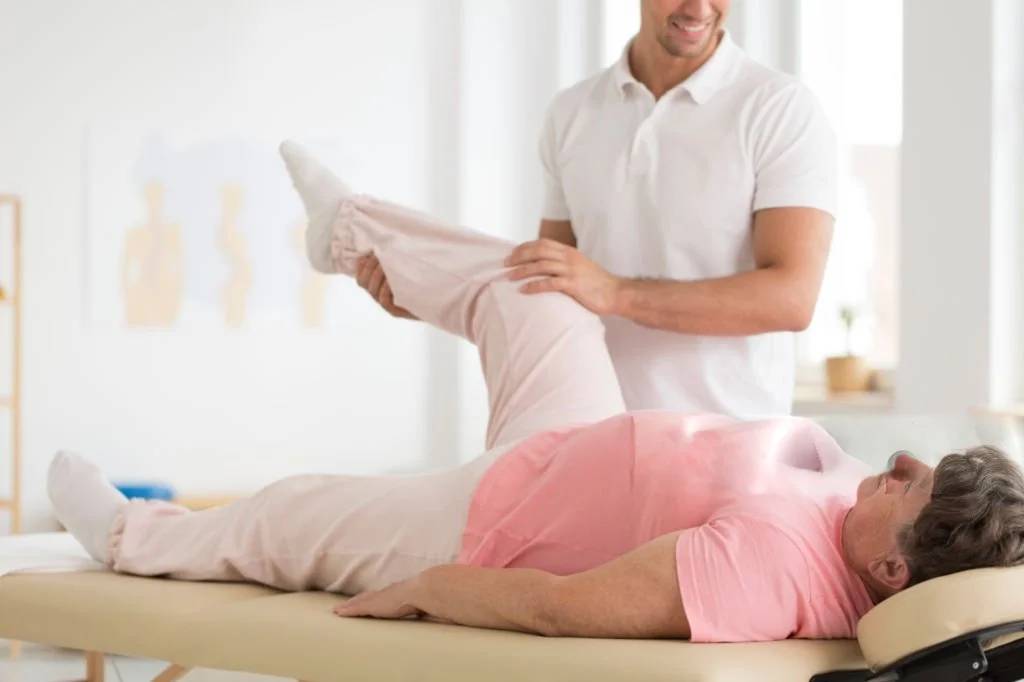Hip Replacement Exercises: A Complete Step-by-Step Recovery Guide
Feeling restricted after a hip replacement? Wondering how to regain strength, walk confidently, and return to daily life without pain? You’re not alone and the good news is that the right exercises can make all the difference. For a gentle way to stay active while boosting mobility and mood, check out gardening for seniors.
The process of overcoming a hip replacement may be frightening, whereas the appropriate strategy can become a game-changer. The key to restoration of strength, flexibility, and confidence is hip replacement exercises. Through perseverance, you will be able to become self-reliant and save post-operative pain.
This guide includes exercises following hip surgery, tips on practical home therapy, and the role of physical therapy in a hip replacement all geared towards efficient and safe recovery.
Why Movement Is Crucial After Hip Replacement
The aim of hip replacement surgery is the alleviation of chronic pain as a result of arthritis, injury or degeneration of the joints. But surgery by itself will not bring back mobility. Simple tasks, such as walking, climbing a staircase or standing, can be challenging due to weak muscles surrounding the hip joint.
Engaging in exercise after hip replacement helps:
- Build up muscles around the hip.
- Aid the fake joint.
- Improve hip mobility exercises and flexibility
- Lesson stiffness and pain.
- Reduce the recovery time in hip replacement.
Without rehab, the pain will last longer and the mobility will be reduced, but with regular hip strengthening exercises, even at home, can dramatically improve your recovery timeline.
The Importance of Physical Therapy
Physical therapy for hip replacement usually begins in the hospital, where the therapists educate the patients on safe movement, the use of assistive devices, and the precautions that should be taken to prevent complications. Therapy, whether at home or in outpatient clinics, is continued once discharged.
Guided physical therapy has the following benefits:
- Safe movement techniques to prevent dislocation.
- Building up hip, quadriceps, and glutaral muscles.
- Improving hip mobility exercises and overall flexibility
- Individualized workouts to improve faster recovery.
- Pain management strategies.
Home therapy enables the patients to do exercises on a daily basis and this is very crucial in the initial three months of healing.
Early Recovery Exercises You Can Do at Home
Starting gentle exercises early helps enhance circulation, reduce swelling, and prevent stiffness. Recommended exercises after hip operation include:
1. Ankle Pumps
-
Lie flat and flex or extend your ankles toward your body.
-
Repeat 10–15 times per foot.
Benefits: Improves blood circulation, reduces swelling, prevents blood clots.
2. Quadriceps Squeeze
-
Lie with legs straight and tighten thigh muscles.
-
Press the knee into the bed, hold for 5 seconds, then relax. Repeat 10 times.
Benefits: Strengthens the thigh muscles that support the hip joint.
3. Gluteal Activation
-
Lie on your back and squeeze the buttocks.
-
Hold for 5 seconds, then release. Repeat 10–15 times.
Benefits: Engages glute muscles to stabilize the hip.
4. Heel Slides
-
Slide the heel toward your buttocks and then back to the starting position.
-
Repeat 10 times.
Benefits: Improves hip mobility exercises and flexibility.
5. Side Leg Raises (Standing)
-
Stand with support, lift the operated leg sideways, and lower slowly.
-
Repeat 10 times.
Benefits: Builds strength in the hip muscles and enhances walking stability.
6. Marching in Place
-
Stand with support, lift your operated leg like marching.
-
Repeat 10–15 times.
Benefits: Strengthens hip flexors and prepares for stair climbing.
7. Bridges (Advanced Stage)
-
Lie on your back with knees bent, lift hips slightly, hold 2–3 seconds, then lower.
-
Repeat 10 times.
Benefits: Strengthens hips and core while improving posture. For additional home-friendly rehab routines, see Cardiac Rehab Exercises at Home.
Guidelines for Safe Home Exercises
In order to exercise safely after hip replacement:
- Begin with small movements that are light.
- Be consistent (2 -3 times a day).
- Support with a chair or counter or rail.
- Stop at once in case of sharp pain.
- Add resistance bands or repeat more and more as you gain strength.
Adhering to these principles will guarantee that you are doing the hip replacement exercises in the right direction and in a safe way.
Advanced Hip Strengthening Exercises
As you heal you can add more and more challenging hip strengthening activities:
- Side leg lifts with resistance bands
- Step-ups on a low platform
- Mini-squats with support
- Stationary cycling
- Increased distance walking.
The exercises are only useful in relieving pain but also in regaining endurance, balance, and confidence in normal movements. These are needed to sustain long-term hip health.
Managing Discomfort During Recovery
Some level of hip pain is normal after surgery. You can manage discomfort with:
-
Ice packs to reduce swelling
-
Elevating the leg to decrease inflammation
-
Following your medication schedule
-
Using supportive cushions while sitting
-
Physical therapy to be continued at home and prevent hip replacement stiffness.
This hip mobility exercise and pain control mixture will slowly make the patient more comfortable and decrease medication dependence.
Home Therapy vs. Outpatient Therapy
Home therapy advantages:
- No travel required
- Home-like conditions.
- Unsuitable to the patients with restricted movement.
Benefits of outpatient therapy:
- Availability of special equipment.
- monitored exercise evolution.
- Group therapy and planned rehabilitation.
The home-based therapy is the initial stage of many patients, followed by outpatient programs of complex exercises and balance training.
Typical Recovery Timeline
Recovery varies based on age, overall health, and commitment to hip replacement exercises:
-
Weeks 1–3: Focus on gentle movement and circulation exercises
-
Weeks 4–6: Introduce strengthening and balance routines
-
Weeks 6–12: Walk longer distances and regain independence
-
Beyond 3 months: Maintain advanced hip strengthening exercises to support long-term hip health
Consistent rehab ensures a faster return to normal activities with minimal pain.
Final Thoughts
The process of healing after hip replacement surgery is a time-consuming process that involves patience and commitment as well as appropriate routines. Via incorporation of hip replacement exercises, hip strengthening exercises and physical therapy for hip replacement, the mobility is restored, pain decreased, and confidence rebuilt.
Stability is a major component every stretch, step, and workout will lead to the long-term recovery. You can choose to have home therapy or an outpatient treatment, whichever you choose, get determined and patient, we will have you walking on your feet again.
It is our commitment to offer quality care that is professional, safe, and effective at Cherished Acres Assisted Family Home in order to achieve your recovery journey.
Take Action Today:
Schedule a consultation for guided hip recovery at home
FAQs
1. Which exercises are best after hip replacement?
Most effective ones include standing hip abductions, bridges, step-ups and side leg lifts using resistance bands. These activities enhance hip mobility exercises, and develop stability about the joint.
2. Can I perform hip replacement rehab at home?
Yes. Exercises that can be performed at home, like heel slides, glute squeezes, and standing marches, are harmless as long as they are performed regularly under the supervision.
3. When can I return to sports or high-impact activities?
The high-impact exercises are usually to be avoided during 3-6 months. Exercise that does not impact, such as swimming or riding a bicycle, can be restarted sooner, with the recommendation of your surgeon.
4. How do I know if I’m overdoing exercises?
Slight pain is the norm but acute pain, swelling and instability is the signal. Minimize intensity or discontinue in the event of these and see your therapist.
5. What movements should I avoid after hip replacement?
Do not cross your legs, flex your hip beyond 90 degrees, fold the leg that has been operated on, or engage in high impact activities before being given the go-ahead by your doctor.


